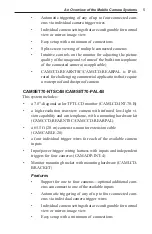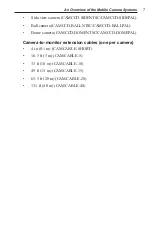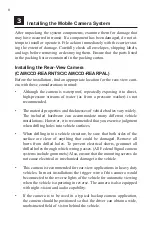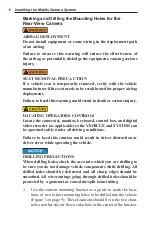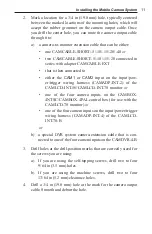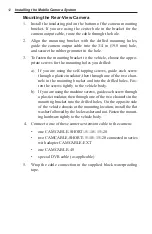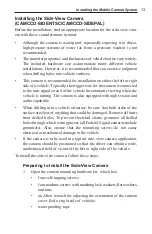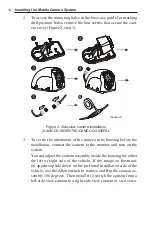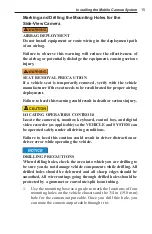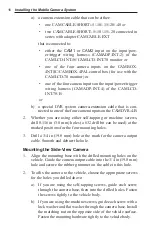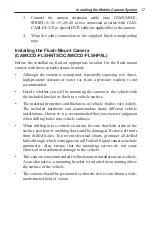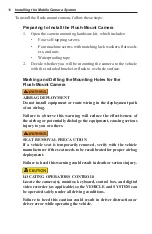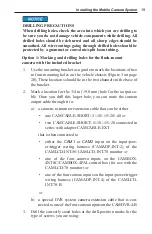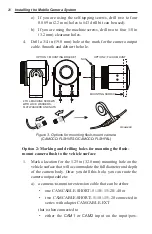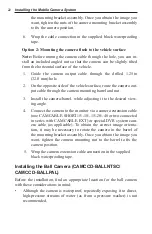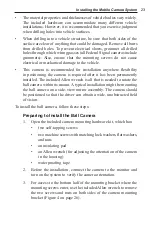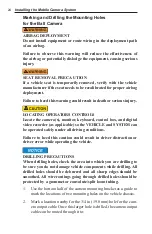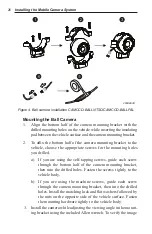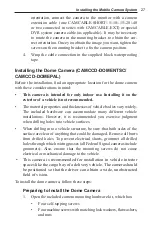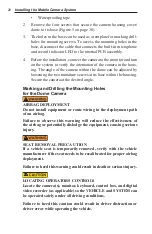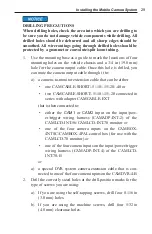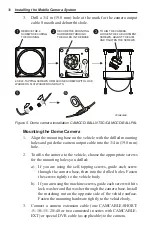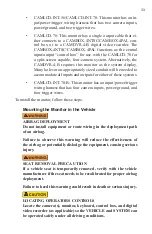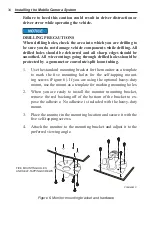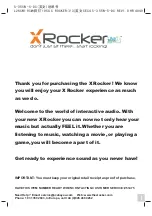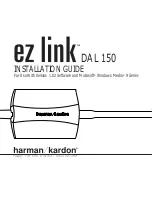
19
Installing the Mobile Camera System
DRILLING PRECAUTIONS
When drilling holes, check the area into which you are drilling to
be sure you do not damage vehicle components while drilling. All
drilled holes should be deburred and all sharp edges should be
smoothed. All wire routings going through drilled holes should be
protected by a grommet or convolute/split loom tubing.
Option 1: Marking and drilling holes for the flush-mount
camera with the included bracket
1. Use the mounting bracket as a guide to mark the locations of two
to four mounting holes on the vehicle chassis (Figure 3 on page
20). These locations should lie in the two channels in the base of
the bracket.
2. Mark a location for the 3/4 in (19.0 mm) hole for the output ca-
ble. Once you drill this larger hole, you can route the camera
output cable through it to:
a) a camera-to-monitor extension cable that can be either
• one CAMCABLE-SHORT/-5/-10/-15/-20/-40
or
• two CAMCABLE-SHORT/-5/-10/-15/-20 connected in
series with adapter CAMCABLE-EXT
that is then connected to
• either the
CAM1
or
CAM2
input on the input/pow-
er/trigger wiring harness (CAMADP-INT-2) of the
CAMLCD-INT-56/CAMLCD-INT-70 monitor
or
• one of the four camera inputs on the CAMBOX-
4NTSC/CAMBOX-4PAL control box (for use with the
CAMLCD-70 monitor)
or
• one of the four camera inputs on the input/power/trigger
wiring harness (CAMADP-INT-4) of the CAMLCD-
INT-70-B
or
b) a special DVR system camera-extension cable that is con-
nected to one of the four camera inputs on the CAMDVR-4-B
3. Drill the correctly sized holes at the drill-position marks for the
type of screws you are using:

